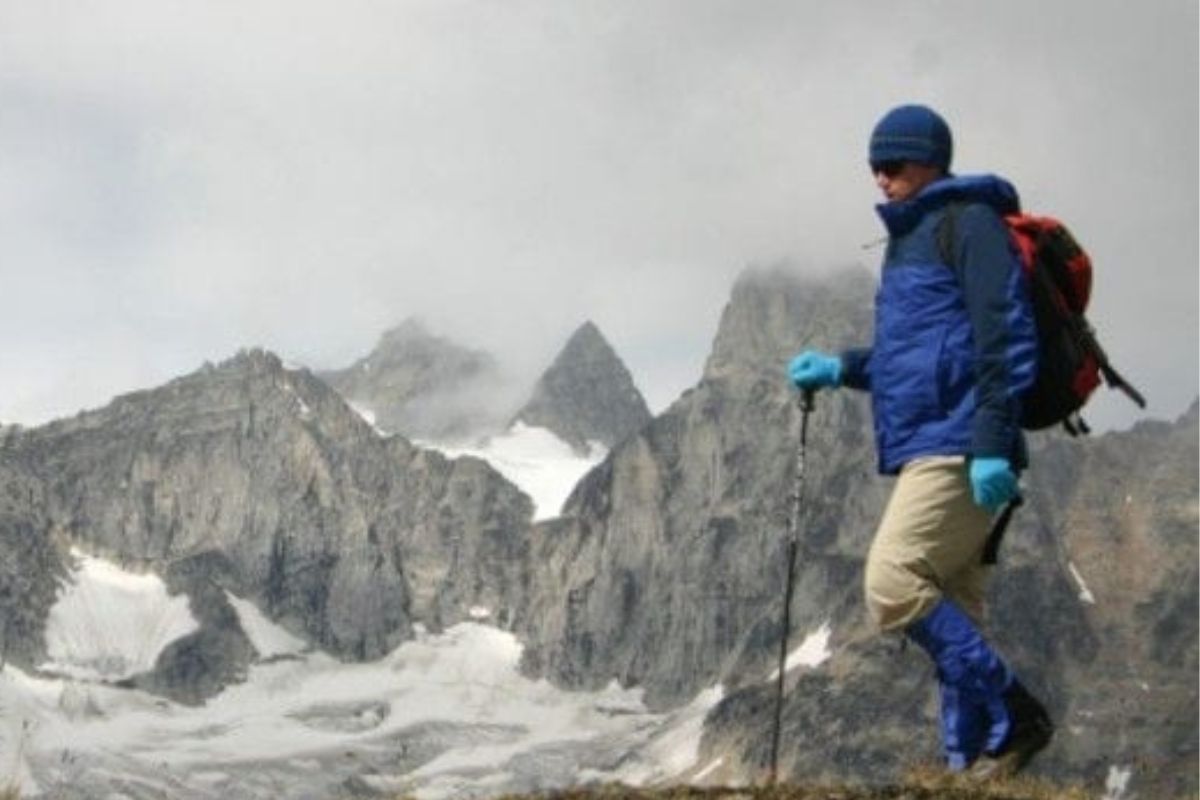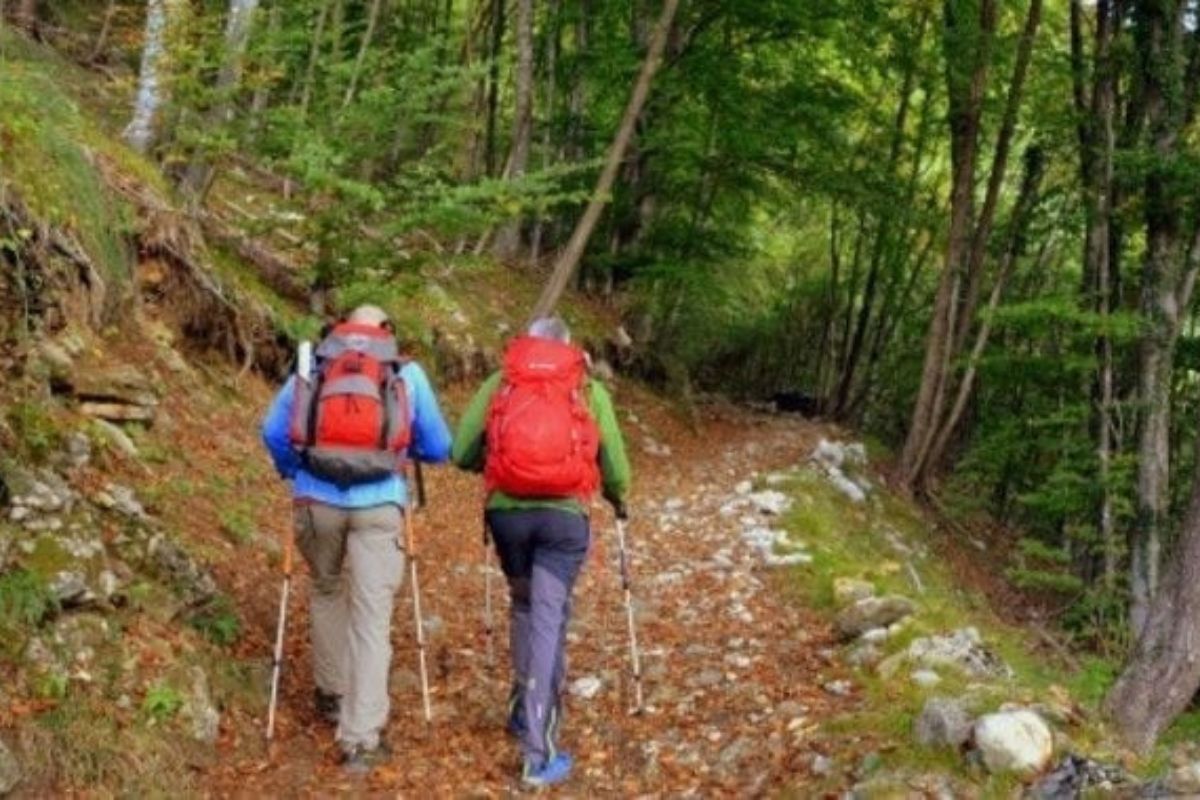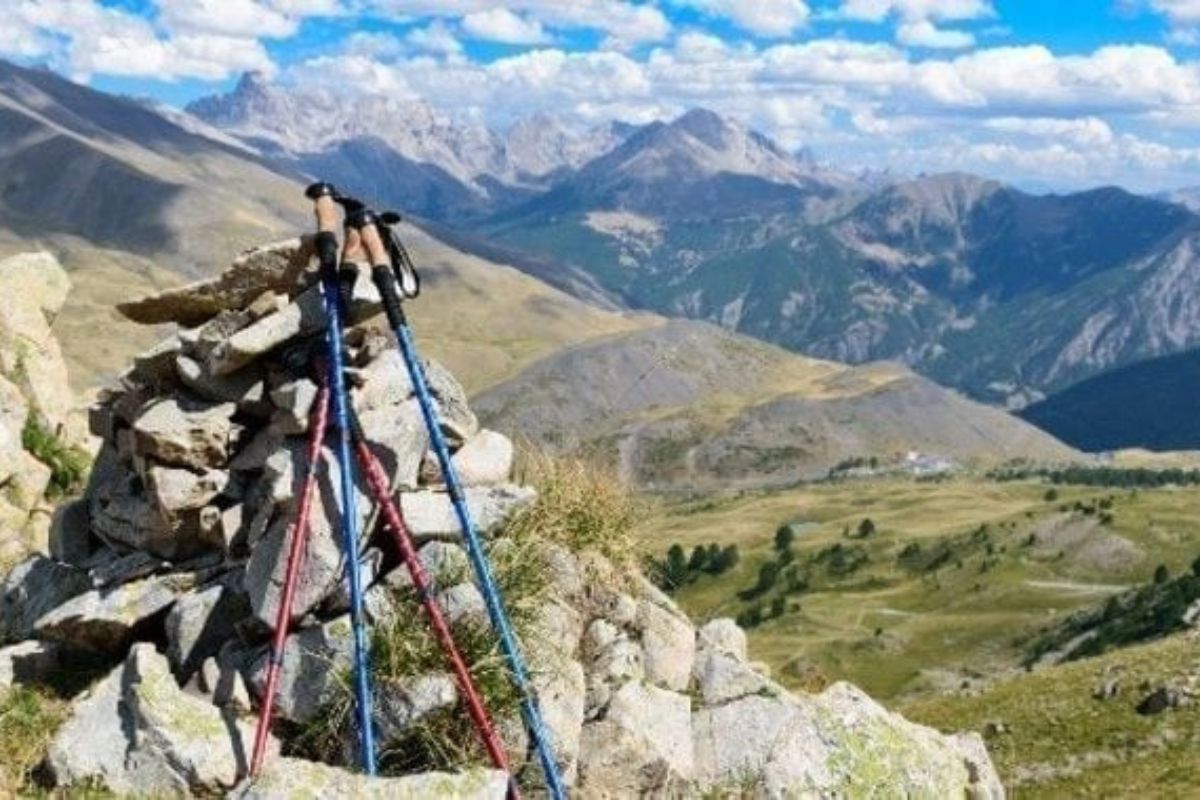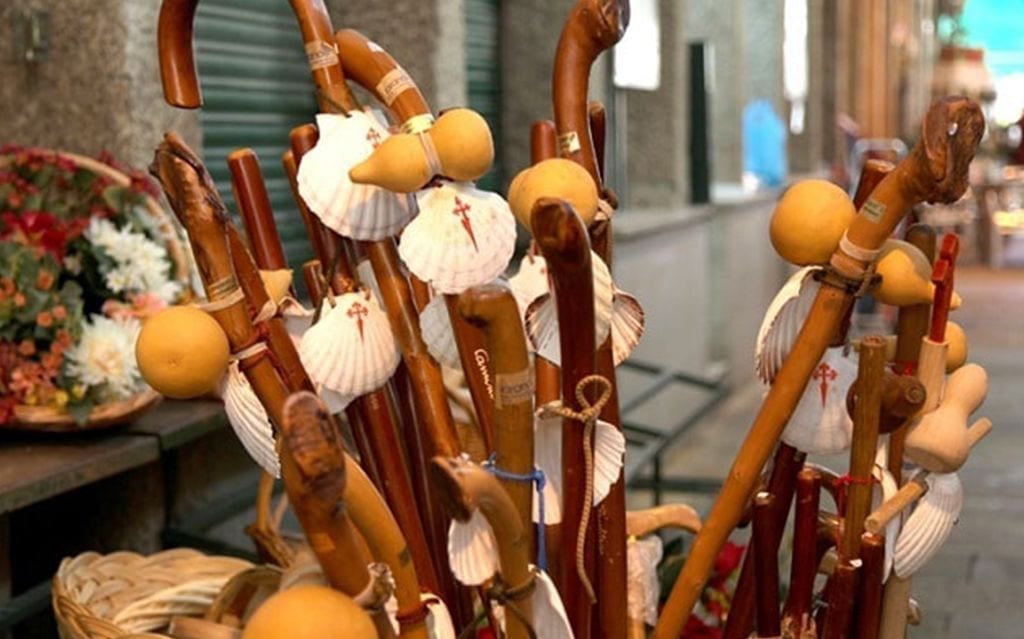The pilgrim’s stick is a highly recognizable element of the pilgrim’s figure. Many use it, while others believe that a walking stick is an unnecessary tool for the Camino de Santiago. However, the truth is that carrying one can greatly facilitate our journey through the different stages of the Jacobean routes. In the following article, you will find information about everything you need to consider when choosing the best walking stick for the Camino de Santiago.
Advantages of Using a Walking Stick
If walkers use walking sticks, there must be a reason. In the past, besides aiding walking, they served to defend against wild animals and even to gather fruits from trees. Nowadays, that might not be necessary, but it is true that carrying walking sticks will help us in our journey.
Firstly, they serve as a third point of support, so the weight will not only rest on our legs but on the whole body. This notably reduces fatigue after a walk of 25 or 30 kilometers.

Walking stick will help you walk
Furthermore, consider that we will walk on different terrains such as dirt, stones, or gravel. In these circumstances, in addition to appropriate footwear, the walking stick will help us grip the ground and maintain balance.
But the moments where they will be most useful are on slopes: the walking stick will make it much easier for us to face steep climbs and descents. Likewise, in wet terrain, or where we have to wade through flooded areas, they will be very useful.
How to Use the Walking Stick Correctly
Firstly, you have to decide whether to carry one or two. The Camino de Santiago, except for specific stages and sections, features simple trails for walkers, and it’s not extreme trekking. Starting from this base, carrying or using just one is sufficient. In this case, it is recommended to alternate hands to distribute the effort between both arms and avoid overloading them.
The grip of the stick will depend on the terrain we are walking on:
- flat terrain: the grip point of the stick will be at elbow height;
- descending terrain: we will hold our stick from the highest part, driving it into the ground, and distribute the weight onto the arms;
- ascending terrain: in this case, we will take the stick from lower down, driving it into the ground and making small thrusts.

Pilgrims with walking sticks on an ascent
The sticks should be carried at an appropriate height and according to the body’s own proportions, which is why they are adjustable nowadays. Therefore, it should be noted that the elbow should form a 90º angle with our body. If they are foldable, make sure to adjust them properly according to your height, and ensure they are securely fixed.
The handle of the stick usually comes with straps that facilitate grip, and we should pass our hand through it and flip it to secure it. This way, we help the hand by bearing some of the weight on the wrist. You can also use wrist straps, which also provide protection for the palms of the hands when you’re not using the stick.
If we carry two sticks, on flat terrain or with a slight slope, we will alternate the use of the left and right ones. If, on the other hand, we are climbing a steep hill, we can use both at the same time to assist in the push.
What types of walking sticks exist and what are their characteristics?
Today, there is a variety of types, brands, and materials of walking sticks available in the market. You might already have yours, but if not, this section is perfect for you. You can buy one before your adventure, or even in a shop along the Camino.
Sectioned Walking Sticks
These sticks can collapse into themselves or fold, making them easier to transport when not in use. Additionally, they have the advantage of being adjustable to your height or that of another pilgrim to whom you might lend the stick. They can be of three types:
- Telescopic: the sections of the stick collapse into themselves;
- Foldable: in this case, they unfold, and the sections are visible;
- Hybrid foldable: a mix of the above.
These walking sticks can be made of various materials such as aluminum or carbon fiber. The main difference will be the weight and price.

There are many types of walking sticks for the Camino
Single-section Walking Sticks
These sticks are usually intended for professionals and athletes. Being single-sectioned, they are not adjustable, so you must ensure to buy one suitable for your height. Additionally, as they do not have a mechanism to fold, they are usually lighter, hence used by expert hikers in extreme trekking or ultratrail.
Traditional Staff
Characteristic of the pilgrim, the staff is an emblematic element of the Camino de Santiago, laden with symbolism and deeply rooted in tradition. Not only does it serve as a practical tool, but it can also foster a profound emotional connection with those who carry it.
Preferred by many pilgrims to mark their pace instead of hiking poles, the staff is typically made of hazelnut or chestnut wood and taller than the pilgrim. It becomes an inseparable companion for many, either personally carved with patience and skill or easily purchased along the French Way, where it is sold at numerous points.
Considerations
When planning your Camino, it’s crucial to consider how to transport them at the beginning and end of your adventure. If you’re traveling by plane, keep in mind that you cannot carry them in the cabin, and they will have to be checked in. In this case, foldable ones, occupying less space, are ideal, otherwise, you’ll need to check them in separately.
The same applies on the return journey. Many pilgrims acquire or receive a wooden staff, grow fond of it, and face a dilemma when returning home. In this case, you can either gift it to another pilgrim or send it by mail to your home. A beautiful memento of your Camino, isn’t it?
What is the typical price range for these walking sticks?
Just as there are many models and brands, there are various prices. From the €5 you could invest in a wooden staff to €50 or more for a quality walking stick, there’s a middle ground. You can find a pair of common foldable sticks starting from €10 at any major retailer or in stores along the Camino de Santiago.

There are walking sticks available at every price point
Your Walking Stick on the Camino, Another Pilgrim
As you can see, there are several types of walking sticks you can take on the Camino de Santiago. You can bring them from home or buy them when starting your Camino. Alternatively, you can improvise, as many do, and use one of the many long and rigid sticks you’ll find along each stage. This way, you economize, avoid transportation problems, and reuse natural resources.
So, what is the best walking stick for the Camino? That depends on your priorities, possibilities, and needs. Either way, the important thing is that you enjoy the Camino de Santiago and do it safely. Be cautious on slopes and wet terrains, and always consider having the best walking stick for your journey at hand.












Leave A Comment